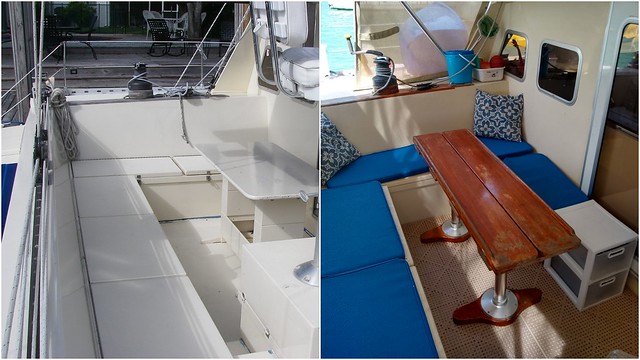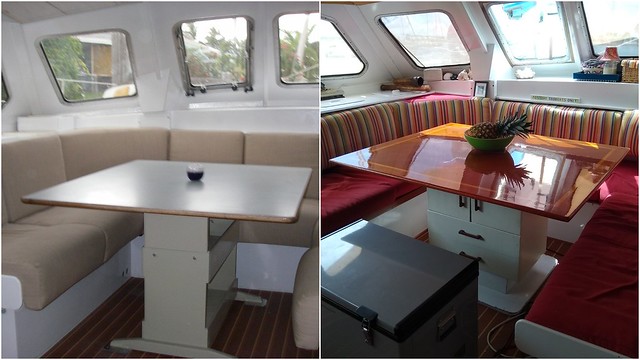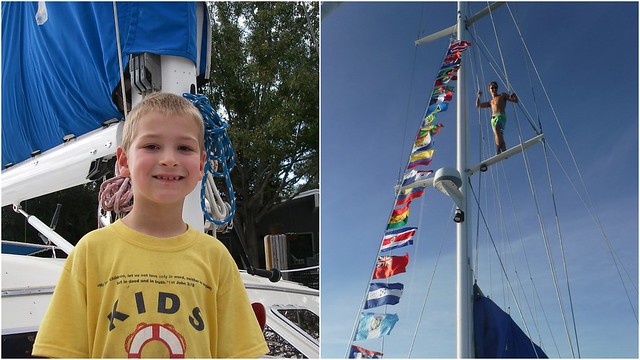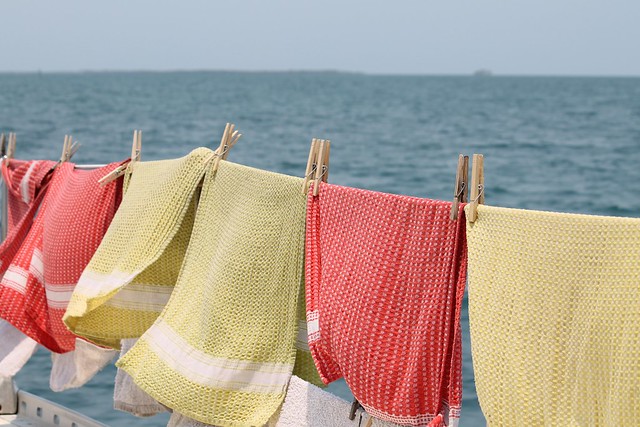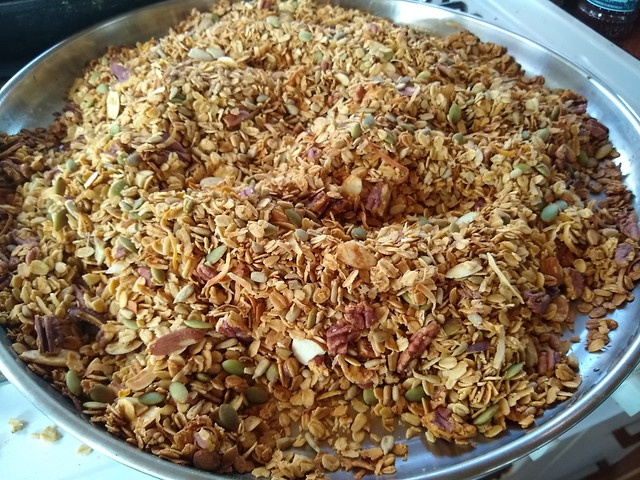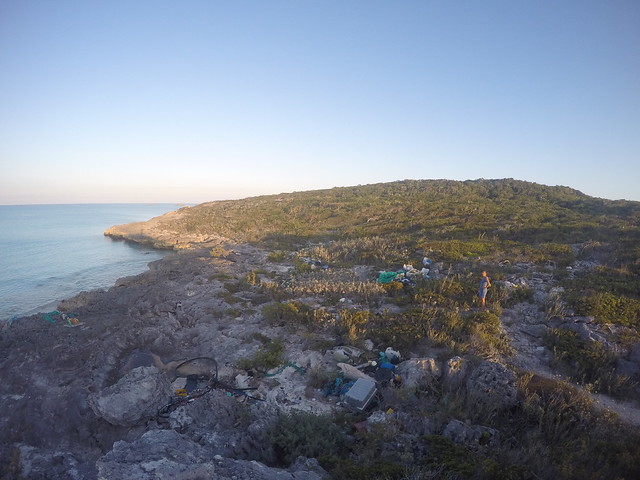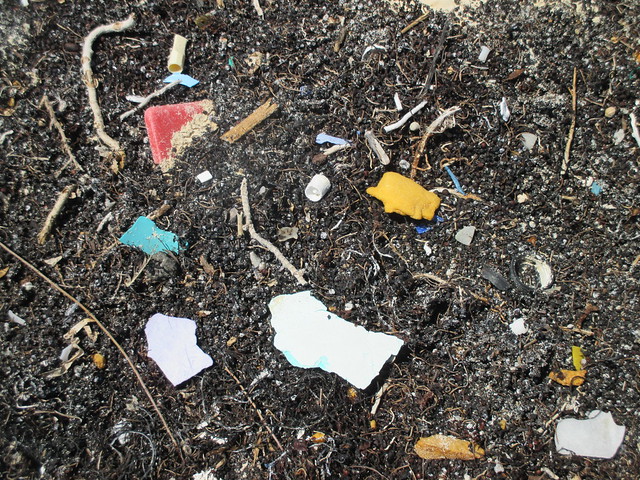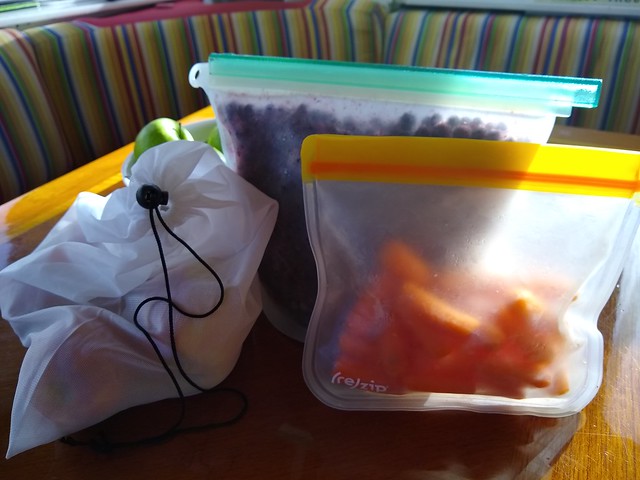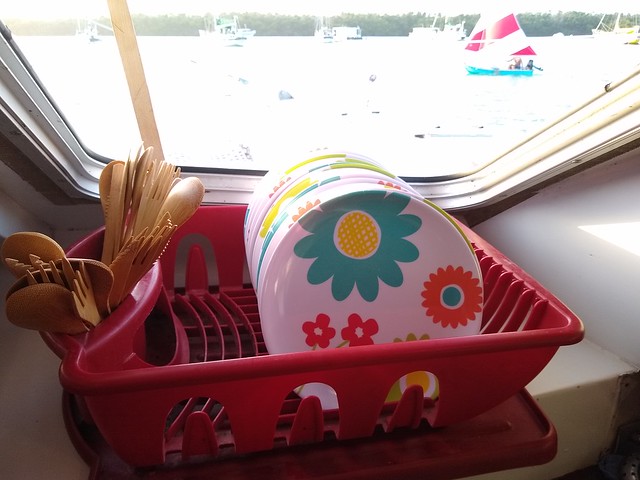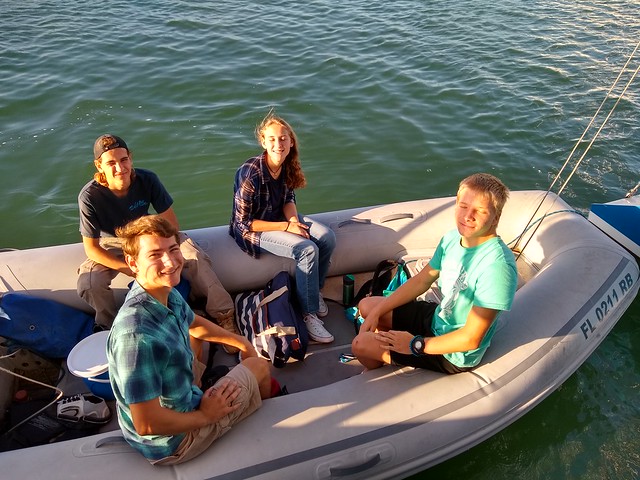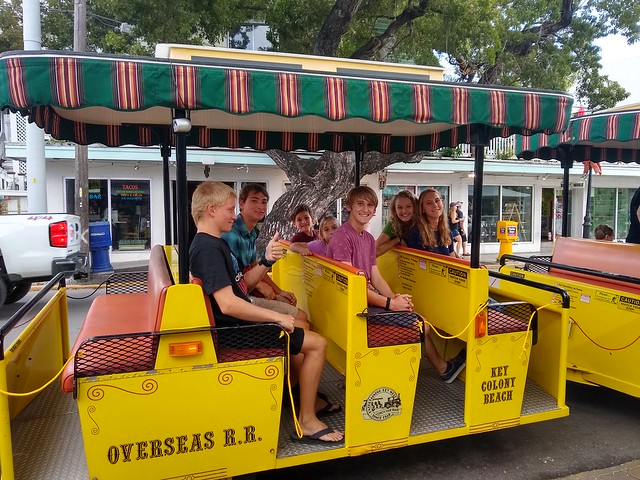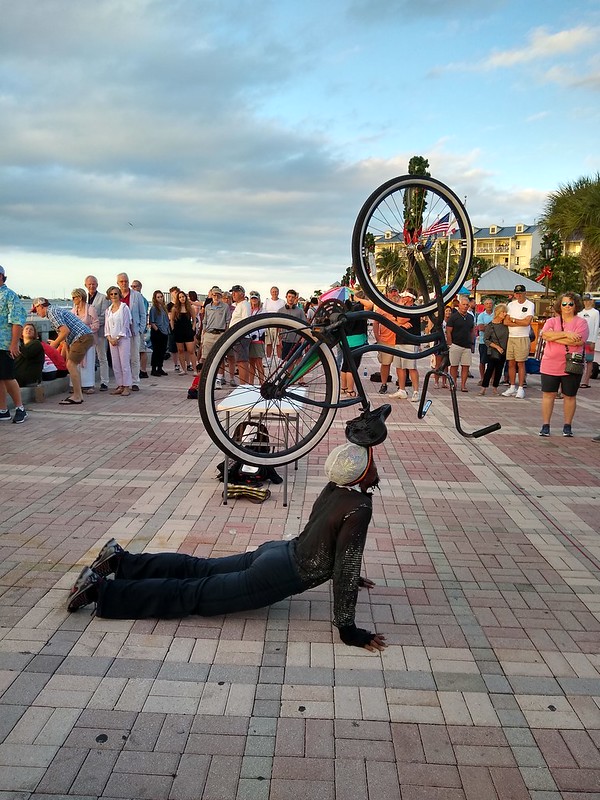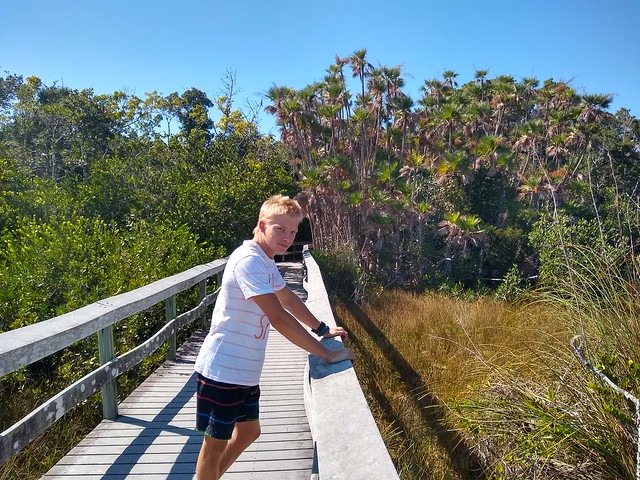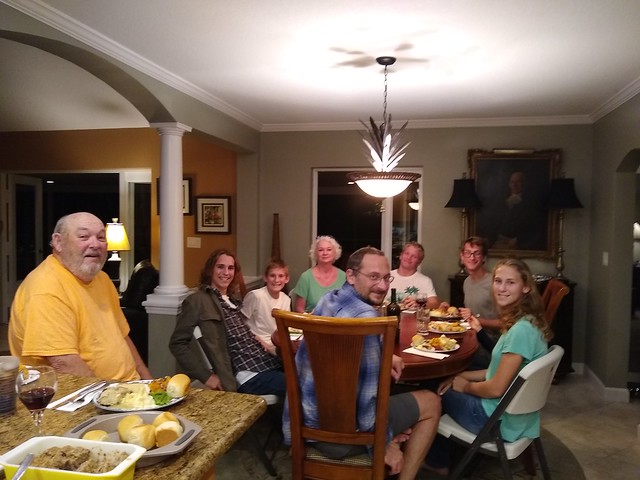Have you ever tried doing yoga on a moving platform? Living on a boat requires constant, minute movements to stay balanced. I don’t even know I’m doing it, but my body is always making small adjustments to say upright. Ironically, balance poses are the biggest challenge in my yoga practice, whether on the dive platform at sunset or on solid ground. If there’s the smallest ripple in the water or shift of the wind, I have to grab onto something or risk a fall. Indoors, unless I can find a good vertical line to focus on, I tip over almost as often. It’s very humbling.
I wish I could say that my emotional balance is better than my physical, but the truth is that I tend toward mood swings, a trapeze flight of high highs and low lows. I never stay at one extreme for very long, and I’m usually at the cheerful end of the pendulum swing, but after 45 years, I still don’t have complete mastery of my emotions. Being married to a steady, quiet, unexcitable person has helped a lot. The spiritual practices of prayer and meditation have helped a lot. Reading good books has helped, as has the free counseling of good friends. Being a parent—trying to model maturity for my children—has helped. But every day, on my yoga mat or off, I have to work to keep my balance.
When times are uncertain, when everything’s up in the air, when daily changes unsettle us, how do we ground ourselves? We must seek balance or fall over. Here are four areas on which we can be working over the next few weeks and months as we prepare for whatever comes next:
- Physical balance. We need to get some exercise or we’ll all gain the “quarantine fifteen.” Breathing, moving—these things center you in the present. They remind you that you are still alive, that as long as you have breath, you have hope. If you can, go for a walk, take a bike ride, go kayaking. If you can’t go outside, do yoga, push-ups, T-Tapp, weights, or some other indoor workout.
- Emotional balance. Who do you love? Who loves you? Reach out to that person. Get a pep talk when you feel bad, give a pep talk when you feel good. If no one has any pep left, share the load and suffer together—that is the literal translation of “compassion” (from the latin prefix “com,” with, and the root “pati,” to suffer). Do something loving for the people in your immediate surroundings, even when they don’t deserve it. That’s the whole point of love. It’s a gift, not something you earn. Sometimes it’s an act of the will, and not of the heart. We can choose a loving action even without warm fuzzy feelings. Steer clear of negativity, criticism, and pessimism.
- Spiritual balance: Who are you? What is the significance of your life? What do you believe? What can you add to the world? If life is a meaningless accident, why do you still act as if it has meaning? Do you have a soul? What happens to you if you die? These are the hard questions, questions no one can answer for you. Now is a good time to ask them and to look for answers. Without some kind of underlying philosophy, without spiritual fortitude, a crisis can be overwhelming.
- A Balanced Schedule: Somehow, without the constructs of school, work, sports, social activities, religious services, and appointments, we must find the self-discipline to make something of this time. If we treat this as an extended vacation (or an endless happy hour), we will miss the good life lessons. Even if you are working your butt off to stay afloat, you must find some balance between work and rest or you will compromise your own health.
- A Balanced Diet: It would be so easy to eat constantly right now. But we have to resist the urge to fill our emptiness with junk food and find things that are really satisfying to the body and soul. On our boat, we’re trying to keep up our healthy eating habits despite the temptation to bake…
However you find your balance—even if you fall over—get up on those wobbly legs, lift your hearts, breathe deeply, and don’t give up!




